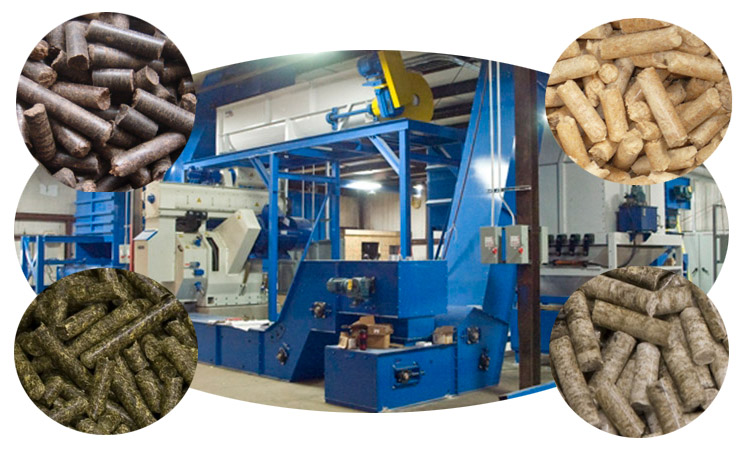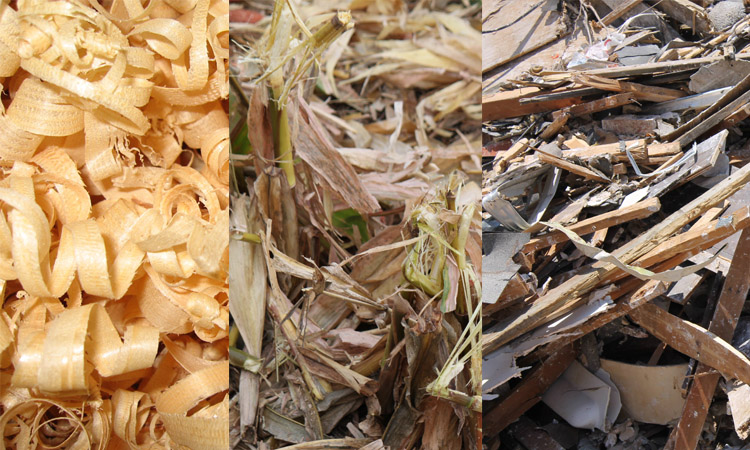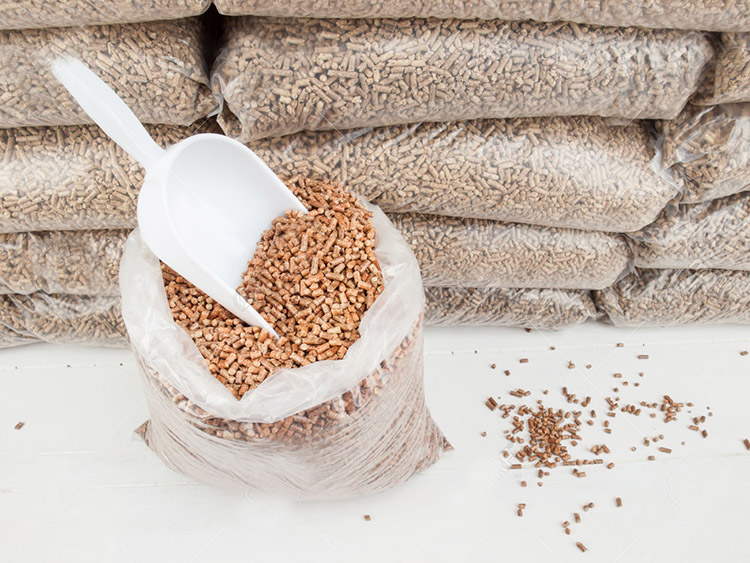
Biomass Pelletizing Plant Definition
Biomass pelletizing Plant is a facility that using the pelletizing technology and equipment to pelletize the biomass material into solid biomass pellet. Biomass pellet is a new kind of commercial renewable fuel which has been well accepted by the EU market. Although Europe is the main consumer of biomass pellet, the biomass pelletizing plant is not mainly distributed in the European area. There are biomass pelletizing plants around the world, such as America, which is one of the large biomass pellet exporter in the world.
Biomass pelletizing plant is a general designation, due to the different types of pellet product, biomass pelletizing plant can be divided into several types: wood pellet plant, EFB pellet plant, cornstalk pellet plant, etc.
Biomass Source Classes for Biomass Pelletizing Plant

To make biomass pellets, we have to find out the suitable biomass raw materials can be processed. In order to give you a clear knowledge about the biomass materials, we have classified the suitable biomass materials into several parts.
Virgin wood
virgin wood refers to the wood material that does not have the chemical treatment. Virgin wood is a clean and untreated biomass material for wood pellet production with a moisture content up to 60%. The “virgin wood” we mentioned here, does not only means the wood logs, it refers to the wood logs and many timber by-products. To make it clear, we have also classified the virgin wood materials into five types, which is bark, logs, sawdust, wood chips, and wood wastes.
Bark is the epidermis of the tree, which is one of the main by-product of saw mills. Wood logs is the main product of the timber industry, it is the trees that has been felled. Sawdust is also a by-product of the saw mill. It is made during the initial sawing work of the saw mill. Wood chips is the by-product which is created during the cutting process of saw mills. The above four types of wood raw materials are total clean wood materials that can be processed directly in the biomass pelletizing plant. But the wood waste is a kind of biomass material that can be found in many different places. It may be the wood particles which has been left in the forest after the harvest, or the tree branches after the prune of the trees in the parks or on aside of roads. As you can see, the wood waste is the biomass waste has been left in the place may be crowded, so it is easy to be mixed with contaminants. Moreover, the quantity of the wood waste is unpredictable, so it is not a recommended biomass source for industrial scale biomass pellet production.
Crop wastes
During the harvest season, there will be many crop wastes that has been left on the field, such as straw, rice husk, corn stalk, etc. They are also the useful dry materials to make biomass pellet. Straw is one of the most common agriculture by-product. It is the stalks of wheat and barley. Rice husk is the outer layer of the rice grain, it is a biomass material you can find in the rice processing mill. Corn stalk has been utilized as a fuel for many years. After the harvest, the corn stalks have been left and occupies the farmland. In order to get rid of the corn stalk wastes, farmers always burn the corn stalks on the farmyard. But burn corn stalk directly will cause a huge environment pollution problem, so in 1993, the European countries formed the law system to forbidden burning corn stalks in the field. During these days, the rest of the world start to realize what a huge damage the combustion of corn stalk makes. So burning corn stalks in the field becomes illegal in most of the countries, which makes it an abundant biomass source for biomass pellet production.
Treated wood wastes
Treated wood wastes refer to the wood wastes which have received some kind of treatment, such as the painted wood plate. The treated wood wastes come from many different industries. For example, the construction and demolition industry. There would be many woody wastes in construction industry, such as the used wood plate, and leftover wood materials. Another place to find the treated wood wastes is the furniture mills. The furniture mill generates many woody offcuts. But as these wood materials were used to make furniture or for construction, there may be some contaminants that will surely impact the biomass pellet production, such as nails and painting. In order to guarantee the safety of the biomass pelletizing plants, there contaminants must be removed before the it could be processed in the biomass pelletizing plant. Furthermore, if the wood has received chemical treatment, it mustn’t be used to make biomass pellets, as the hazardous substance will be released during the combustion.
Why Start Biomass Pelletizing Plant

Basically, there are two reasons to start a biomass pelletizing plant:
Financial
Biomass pellet is a popular renewable fuel which has been widely utilized in both industrial power and heat generation and residential heating system. With the serious concern of environment problem is growing these days, the biomass pellet will receive a blooming period. The message of the global biomass pellet consumption research shows that the global biomass pellet production just meet the biomass pellet demand right now, so start a biomass pellet production business is a good choice for the global industrial investors.
Environmental
Biomass is the carbon based biological material derived from living and recently living organisms. The carbon of the biomass is absorbed from the carbon dioxide of the atmosphere during the plant growing period. The carbon will be returned to the atmosphere as carbon dioxide if people burning the biomass directly. Biomass pellet is a renewable fuel with the characters of high density, better combustion performance and low carbon release. And the raw material it uses are mainly the wastes, which is a burden to the society. So, to start a biomass pelletizing plant, we can not only make money with the wastes, but also help lower the carbon release of the world.
